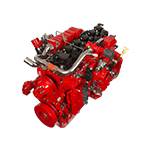Oct . 30, 2024 11:51 Back to list
drum brake
Understanding Drum Brakes A Comprehensive Overview
Drum brakes are a type of braking mechanism that has been widely used in automotive applications for many decades. Unlike disc brakes, which are more commonly found on modern vehicles, drum brakes operate using a cylindrical drum and brake shoes. This article delves into the workings, advantages, and disadvantages of drum brakes, providing a comprehensive understanding of this essential automotive component.
How Drum Brakes Work
At the core of a drum brake system is a metal drum that rotates with the wheel. Inside this drum, two curved brake shoes are positioned. When the driver presses the brake pedal, hydraulic fluid moves through the brake lines, pushing the brake shoes outward against the inside surface of the drum. This friction between the shoes and the drum creates the resistance needed to slow down or stop the vehicle. The design allows for effective heat dissipation, due to the larger surface area in contact with the drum.
Drum brakes are typically found in the rear wheels of many vehicles, although some older cars may have them on the front as well. They can be operated either manually or using advanced electronic systems in newer models. The simplicity of the drum brake design contributes to its effectiveness in various situations, especially for lighter vehicles.
Advantages of Drum Brakes
One of the primary advantages of drum brakes is their cost-effectiveness. They are generally less expensive to produce and install compared to disc brakes, making them a popular choice for budget-friendly vehicles. Additionally, drum brakes have a higher coefficient of friction, allowing them to provide strong stopping power under moderate conditions. Their enclosed design also helps protect the braking components from dirt and debris, which can enhance performance in certain environments.
drum brake

Another benefit is their ability to retain braking force better than disc brakes in some scenarios, such as during parking. The design of drum brakes allows them to lock in place, holding the vehicle stationary, which is particularly useful for trucks and larger vehicles that may experience loads and gradients.
Disadvantages of Drum Brakes
Despite their advantages, drum brakes do have some drawbacks. One significant issue is heat buildup. When drum brakes are used excessively, especially in high-speed or aggressive driving conditions, they can overheat and lead to brake fade, where the braking performance diminishes. This typically results in longer stopping distances and diminished safety.
Furthermore, drum brakes can be more challenging to service than disc brakes. The internal components are often not as accessible, making repairs and maintenance a more time-consuming and complex process.
Conclusion
In summary, drum brakes play a crucial role in the braking systems of many vehicles, offering a blend of effectiveness, cost-efficiency, and durability. While they possess certain advantages, including better protection from the environment and cost savings, their limitations regarding heat management and maintenance complexity cannot be overlooked. Understanding these mechanics is vital for both automotive enthusiasts and everyday drivers, as it aids in making informed decisions about vehicle maintenance and performance.
-
HINO Industrial Efficiency-Jiangsu Hino Industrial|Productivity Optimization&Cost Reduction
NewsJul.12,2025
-
HINO-¡Ң���ຽ��е��������˾|Advanced Industrial Solutions&Energy Efficiency
NewsJul.12,2025
-
Premium Brake Drum Iveco – Durable Drum Brake Drum & Brake Shoe Solutions
NewsJul.08,2025
-
High-Performance Brake Drum Liza for Enhanced Safety Reliable Drum Brake Drum & Brake Shoe Solutions
NewsJul.08,2025
-
High-Quality Brake Drum MAZ – Durable Drum Brake Drum & Brake Drum and Brake Shoe for Optimal Performance
NewsJul.07,2025
-
High-Quality Brake Drum Kamaz for Reliable Performance Durable Drum Brake Drum & Brake Shoes
NewsJul.07,2025
